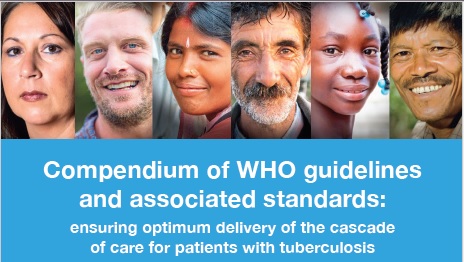
The Global Tuberculosis Programme of the World Health Organization (WHO) has released the second edition of the “Compendium of WHO guidelines and associated standards” to support the delivery of care for all persons affected by tuberculosis (TB).
The Compendium has been developed as a clear and concise instrument to facilitate the understanding and planning of delivery of high-quality care for everybody affected by TB. It incorporates all recent policy guidance from WHO; follows the care pathway of persons with signs or symptoms of TB in seeking diagnosis, treatment and care; and includes key algorithms and cross-cutting elements that are essential to a patient-centered approach in the cascade of TB care.
The Compendium is structured into 33 WHO standards and consolidates all current WHO TB policy recommendations into a single resource, with electronic links to the individual, comprehensive WHO policy guidelines.
Background
Tuberculosis (TB) is the single leading infectious cause of mortality. Ending the TB epidemic is one of the targets of the Sustainable Development Goals (SDGs) that requires intensive action by all countries, especially those with a high TB burden. The World Health Organization (WHO) End TB Strategy encompasses a package of interventions organized around the three pillars of integrated patient-centered care and prevention, bold policies and supportive systems and intensified research and innovation that should be adapted at country level. The End TB strategy requires the implementation of a combination of biomedical, public health and socioeconomic activities to accelerate the decline in global TB incidence and mortality rates while addressing all of the determinants of the TB epidemic with high-level commitment and a multisectoral approach.
The Compendium will be updated annually to allow incorporation of new evidence emerging from the rapidly evolving TB diagnostic and treatment landscape.
